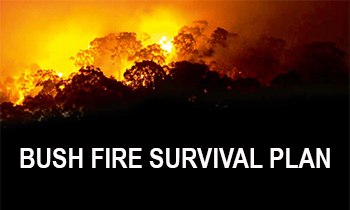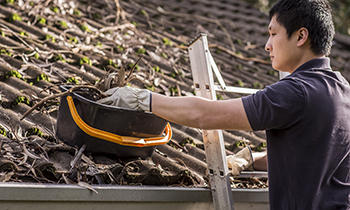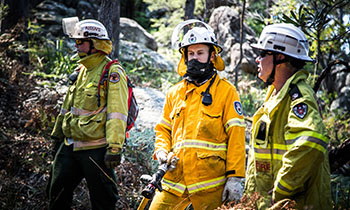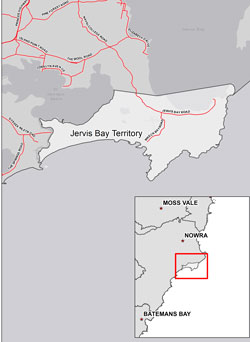Why we need a plan
Bush Fire Risk Management Plans are an effective instrument for managing risk to human activity and valued community and environmental assets. They are a key component in a multifaceted bush fire management approach for NSW.
We are planning together to manage bush fire risk in the Jervis Bay Territory area by preparing a new five-year plan of strategies and actions.
How will your input be used
The data from the Have Your Say survey responses has been anonymously supplied to your area’s Bush Fire Management Committee. They will assess data collections rather than individual answers, so that they can establish a clearer community sentiment and gain insights from a large sample size.The personal details you submitted will be used to validate your submission and to allow notifications to be sent to you when the status of this BFRMP changes.
Our community
The JBT FMC area is Jervis Bay Territory (a Commonwealth Territory), on the New South Wales south coast. The area spans 7,530 hectares, which includes Booderee National Park, Wreck Bay Aboriginal Land, Department of Defence land and Commonwealth leases managed by the Department of Infrastructure, Transport, Regional Development, Communication and the Arts. Fire management and response in the FMC is managed in conjunction with the NSW Rural Fire Service.
-
 According to the Australian Bureau of Statistics 2021 Census Community Profile, the population of the JBT FMC area is 310, with 120 residential dwellings. The population of the JBT FMC area fluctuates significantly throughout the seasons. It is a popular destination for tourists, especially during the summer months. It is also the location of the Defence naval base HMAS Creswell. When taking Defence personnel, trainees and contractors into account, there can be about 400 individuals on the base. During peak summer periods, the Park can see up to 1,500 visitors a day, including campers.
According to the Australian Bureau of Statistics 2021 Census Community Profile, the population of the JBT FMC area is 310, with 120 residential dwellings. The population of the JBT FMC area fluctuates significantly throughout the seasons. It is a popular destination for tourists, especially during the summer months. It is also the location of the Defence naval base HMAS Creswell. When taking Defence personnel, trainees and contractors into account, there can be about 400 individuals on the base. During peak summer periods, the Park can see up to 1,500 visitors a day, including campers. -
 According to 2021 Census data, Defence, other Government and Primary Education are the largest employing industries of people living and working in the JBT FMC.
According to 2021 Census data, Defence, other Government and Primary Education are the largest employing industries of people living and working in the JBT FMC. -
 The last major bush fire in the JBT was during the 2020/21 bush fire season, with approximately 343 hectares of bushland burnt, along with electrical infrastructure.
The last major bush fire in the JBT was during the 2020/21 bush fire season, with approximately 343 hectares of bushland burnt, along with electrical infrastructure. -
 There are several valuable community assets across the area, along with a number of culturally significant and environmentally important sites.
There are several valuable community assets across the area, along with a number of culturally significant and environmentally important sites.
Current Bush Fire Risk Management Plan for Jervis Bay Territory
The Bush Fire Risk Management Plan (BFRMP) for Jervis Bay Territory was prepared by the FMC and approved on 26 July 2018.
This BFRMP identifies the bush fire risks in Jervis Bay Territory area and sets out the types of work scheduled to deal with the risk of bush fires.
BFRMPs are updated every five years, while the treatments and works set out in the plans are subject to change on a yearly basis due to fire activity, weather and new risk factors. The existing plan may not reflect the latest information.
We are seeking public input to ensure the plan is updated and current.
The Jervis Bay Territory Fire Management Committee (JBT FMC) is made up of stakeholders from the local and surrounding area including emergency services, government, and the local Aboriginal community council. This ensures key stakeholders have a say on bush fire management activities.
The JBT FMC is made up of the representatives of the following:
- Wreck Bay Aboriginal Community Council
- Australian Federal Police
- Booderee National Park (Parks Australia)
- Commonwealth Department of Infrastructure, Transport, Regional Development, Communication and the Arts
- Department of Defence
- Fire and Rescue NSW
- Jervis Bay Territory Rural Fire Brigade
- NSW Rural Fire Service
- Shoalhaven City Council
- Wreck Bay Rural Fire Brigade
Other stakeholders who may be involved in developing the BFRMP include:
- Ambulance Service of NSW
- NSW State Emergency Service
- NSW Police
- Essential Energy







